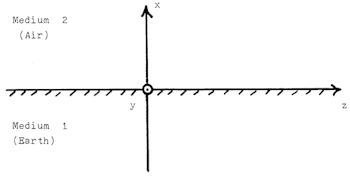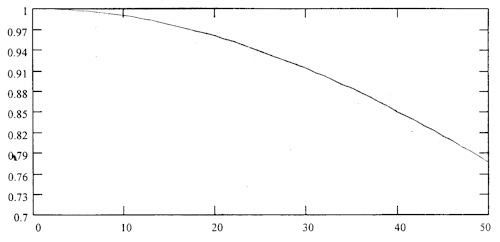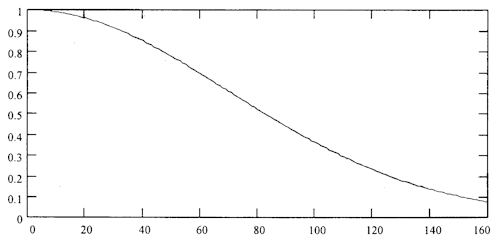 |
From Feed
Line No. 4
REDISCOVERING THE ZENNECK SURFACE WAVE
by Gary Peterson
In 1916 while speaking of his system for global
transmission, Nikola Tesla cited the analysis of mathematician Arnold N. Sommerfeld as
verification of his explanations of observed radio phenomena. Tesla was referring to his
system in which, he claimed, 90% to 95% of the electrical energy was manifested at the transmitters
output as "current waves" with the remainder existing as dissipating
electromagnetic
radiation (see Antenna
Theory). In 1909 another investigator by the name of Johann
Zenneck, while working to explain Marconi's trans-oceanic results, showed that a unique
type of surface wave could travel along the interface between the ground and the air.
In
the words of James Corum,
"The distinguishing feature of the Zenneck wave was
that the propagating energy didn't spread like radiation, but was concentrated near the
guiding surface. Sommerfeld had shown that an electromagnetic wave could be guided along a
wire of finite conductivity, and Zenneck conceived that the earth's surface would
perform in a manner similar to a single conducting wire." [see
"Operating Principles of the Wardenclyffe Apparatus"]
In commenting on Sommerfeld's analysis of the surface wave,
James R. Wait states that "The field amplitude varies inversely as the square
root of the horizontal distance from the source. . . ." It's interesting to note
that Sommerfeld made a point of distinguishing between the "electrodynamic"
surface wave and its Hertzian counterpart the space wave, believing that both components
could be present in varying proportion in the wave complex. It was Tesla's assertion that
the exact composition of the emissions was dependent upon the design of the transmitter.

Geometry for Zenneck wave propagation.
According to James Corum's mathematical analysis of the Zenneck wave,
"The resulting wave is a surface guided (single
conductor) transmission line mode which attenuates exponentially along the
guide. . . . There is no inverse square spreading or diffraction, as with Hertzian
waves. . . . With
appropriate constitutive parameters, a pure Zenneck wave would seem to hold out the
promise of guided propagation with no radiation field to waste energy."
As the study of radio propagation progressed and certain
mathematical analyses excluded it, some question as to the existence of Zenneck surface
waves began to develop. In 1937 limited support was given to these doubts after tests
showed simple antennas driven at 150 mHz produced 100 times lower field strength
than predicted. More recent investigations show evidence that Zenneck waves can, indeed,
be generated. The lower the frequency, the lower are the propagation losses.
It is also
apparent that they are not a major contributor to the field produced by an electric dipole
or a quarter wave radiator, however they might be excited by an
energetic quarter wave resonator. To quote Hill and Wait,
"As it turns out, the
Zenneck wave is generally difficult to excite with a realistic source
because it has a rather slow decay with height above the earth's
surface. But there is still an open question whether other types of
sources may not be more favorable. . . . An infinite vertical aperture
with height variation corresponding to that of the Zenneck wave will
excite only the Zenneck surface wave with no radiation field. . . ."
[Hill, D. and J.R. Wait, "Excitation of the Zenneck Surface Wave by a
vertical Aperture," Radio Science, Vol. 13, No. 6, November-December,
1978, pp. 969-977.]
And to once again quote Dr. Corum,
"The 1978 analysis
provided by Hill and Wait examined the fields produced by a vertical sheet
of horizontally directed magnetic current with an exponential
variation in an 'infinite Zenneck" aperture. . . . The analysis .
. . showed that this field has no intrinsic merit at 1 to 10 MHz, and we
certainly agree. One wonders, however (and this is pure conjecture
at this point), if the disposition of Tesla's Colorado Springs high
voltage (10-20 Mv) VLF resonator did, in fact, possess an effective
vertical distribution of magnetic current which could launch a similar
Zenneck Surface Wave. . . ."
Plots of field strength vs. frequency indicate that a
Zenneck wave propagates best at ELF and VLF frequencies up to about 35 kHz and
begins to lose
its
advantage as frequency rises above this point.


Predicted Zenneck wave field strength decrease for around-the-world propagation as a function of frequency in kHz.

The complex longitudinal propagation phase constant along the Earth's
surface for the Zenneck surface wave.
The Zenneck Surface Wave vs.
the Norton Surface Wave
A 1/2-wave dipole antenna in free
space--the Hertz antenna--approaches an ideal source of electromagnetic radiation
emitted
in the form of space waves. These space waves can reach the
receiver either by sky-wave propagation or by ground-wave propagation,
the latter being the portion
of the radiated space wave that propagates close to the earth's surface.
The ground wave has both direct-wave and
ground-reflected components, and under certain conditions a tropospheric
ducting component. The direct-wave is limited
only by the distance to the horizon from the transmitter plus a small
distance added by atmospheric diffraction around the curvature of the
earth. The ground-reflected portion of the radiated
wave reaches the receiving antenna after being reflected from the earth's surface.
There is also an induced ground-hugging surface-wave
component known as the Norton surface
wave. This wave is the result of
electrical currents induced in the ground by refraction of a portion of
the reflected-wave component at the earth-atmosphere interface. Upon reflection
from the Earth's surface the reflected wave undergoes a 180deg phase
reversal. When both transmitting and receiving antennas are on, or
close to, the ground, and the distance between them becomes great, the
direct and reflected components tend to cancel out, and the resulting
field intensity is principally that of this surface wave. Because
part of its energy is absorbed by the ground, the electrical intensity of
the surface wave is attenuated at a much greater rate than inversely as
the distance. It is the conductivity of the underlying terrain that
determines the attenuation of the surface-wave field intensity as a
function of distance. The ground currents of a vertically polarized
surface wave do not short-circuit a given electric field but rather serve
to restore part of the used energy to the following field. The
better the conducting surface layer, the more energy returned and the less
energy absorbed. [Antennas and Radio Propagation, TM 11-666, Dept. of the
Army, Feb. 1953, pp. 17-23.]
It is useful here to consider two
additional forms of wireless
telecommunications antennas or launching structures, the
Marconi antenna, a vertical 1/4-wave monopole antenna element and the Tesla antenna, a vertical high aspect-ratio
1/4-wave helical resonator with large capacitive top loading
and small overall height, compared to the electrical 1/4 wavelength.
In both cases the structure is base fed, and a ground connection is used.
The
Marconi antenna is a modified 1/2-wave Hertz antenna
adapted to the real-world conditions encountered in the construction of
medium and low frequency transmitters. These adaptations are imposed by the
wavelength involved and the resulting physical dimensions required of
the antenna. The dipole antenna is modified in that its lower
half, 1/4 wavelength long, exists only as a mirror image of its upper
counterpart. The resulting 1/4-wave vertical monopole antenna
takes advantage of the fact that at lower frequencies the ground acts as a
mirror for the radiated energy. The ground reflects a large amount
of the energy that is radiated downward from the antenna mounted over
it. In the physical construction of the ground
connection is important to have as high a conductivity as possible.
The object is to provide the
best possible reflecting surface for the energy radiated downward from
the antenna. The ground consists of a number of bare conductors arranged
radially and connected, 1/2 wavelength long, buried a short distance
beneath the earth's surface. In practice these conductors may act as
part of the reflecting surface as well as making the connection to
ground itself.
An alternative type of ground is the counterpoise.
It is a wire structure erected a short distance above the ground,
and insulated from the ground. The counterpoise operates by virtue of its capacitance to the
ground. Not
unlike the Hertz antenna, the Marconi antenna is a source electromagnetic radiation in the form of
space waves.
The Tesla antenna is a
form of wireless antenna or wave launching structure developed by Nikola
Tesla in which the transmitted energy propagates or is carried to the
receiver by a combination of electrical current flowing through the
earth, electrostatic induction and electrical conduction through plasma
with an embedded magnetic field. Of course it is also part of an
electric dipole, consisting of the elevated capacitance, the helical
resonator and master oscillator plus connections, and the Earth itself. The above-ground
structure is not
intended as a source of electromagnetic radiation, rather, it is
designed to minimize the production of electromagnetic radiation. The principle that
the ground acts as a mirror, which reflects electromagnetic energy radiated downward
by the antenna mounted over it, is not applicable.
In operation,
the Tesla
launching structure induces an electrical current in the earth between the transmitting and receiving stations,
along with an associated surface wave, that propagate the transmitted energy.
A conducting path is also establish through the rarified upper level
atmosphere between the transmitting and receiving stations
elevated high voltage terminals, leading Tesla to coin the term "disturbed charge of ground and air method."
He stated that this method involves electrical conduction and that energy escapes from the
system in the form of electromagnetic radiation. The conducting media
are the earth and the atmosphere above 5 miles elevation. While
the region from 5 miles up to the ionosphere is not an ohmic conductor, the density or pressure is sufficiently reduced to so that, according to Tesla—s theory, the atmosphere—s insulating properties can be easily impaired allowing an electric current to flow. His theory further suggests that the conducting region is developed through the process of atmospheric ionization, shifting the effected portions thereof to a plasma state.
A magnetic field is developed by each plant—s helical resonator,
meaning that an embedded magnetic field is also involved. The atmosphere below 5 miles is also viewed as a propagating medium for a portion of the above ground circuit, and being an insulating medium, electrostatic
induction or —displacement current— would be involved rather than true electrical conduction. Tesla felt that with a sufficiently high electrical potential on the elevated terminal the practical limitation imposed upon its height could be overcome. He anticipated that a highly energetic
transmitter would charge the elevated terminal to the point where the atmosphere around and above it would break down and become ionized, leading to a flow of true conduction currents between the two terminals through the
troposphere path connection.
Now, Sommerfeld described an
electrodynamic wave that is guided along a wire of finite conductivity and
Zenneck expanded upon this description, asserting that the earth's surface
performs in a manner similar to a conducting wire. And,
while the Norton Surface
Wave is the result of electrical
currents induced in the ground by refraction of a portion of the
reflected-wave component of the ground-wave at the earth-atmosphere interface,
the surface wave associated with Tesla—s apparatus is the result of
electrical ground currents flowing between two discrete points on the
earth—s surface. Unlike
the lossy Norton
surface-wave that is
excited by a conventional AM radio transmitter it would seem that Tesla—s
surface wave would not diminish quite as significantly as the distance from
the source facility increases. [See
"A Comparison of the Tesla and Marconi LF Wireless Systems"]
[This piece is derived from
"The Zenneck Surface Wave," Appendix II of the paper
entitled "Nikola Tesla, Lightning Observations and Stationary Waves"
by K. L. Corum and J. F. Corum, Ph.D. 1994., presented
at the 1994 Colorado Springs Tesla Symposium. This and other papers are available
through PV Scientific Instruments' Tesla Reprint Page.
See also The Purpose of the Wardenclyffe Tower.]
|
 |
![]()